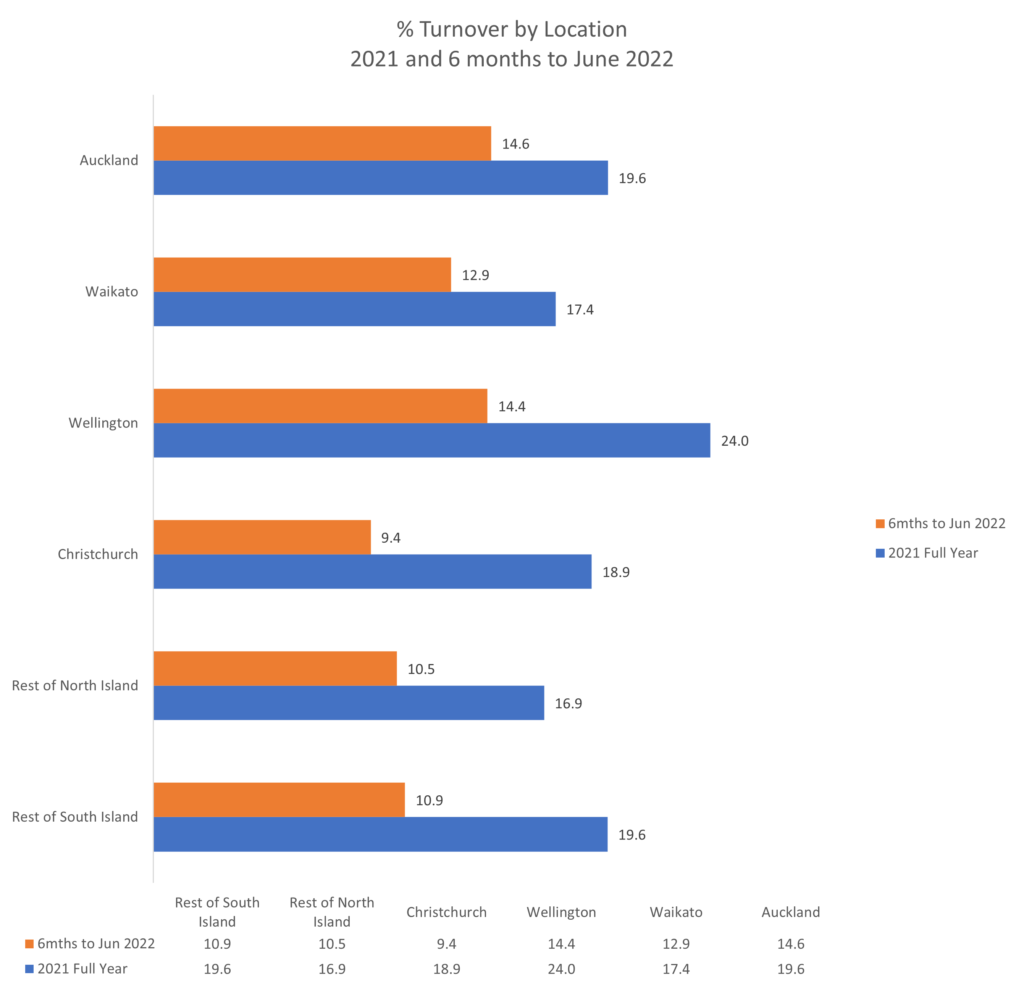New Zealand Staff Turnover by Location – 2022
The 2024 NZ Staff Turnover Survey is open – learn more and participate
Most locations experience a significant rise in Staff Turnover.
The increase in staff turnover in the full year of 2021 was felt across most regions and cities in New Zealand except for Auckland and Christchurch.
The Lawson Williams 2022 Staff Turnover Survey released in October 2022 reports that Wellington experienced the greatest increase of 31% from 2020 to 2021 followed closely by the Rest of the South Island at a 29% increase.
Auckland decreased by 10% and Christchurch by 5% over this period.
The Turnover percentages at 30th June 2022 indicate that there is likely to be another increase in Staff Turnover for the full 2022 year.
All regions and cities show that staff turnover is above 50% of 2021 levels for the first 6 months of 2022, with an average percentage of 62.7%.
Locations showing the most potential for an increase are Auckland and Waikato reaching 74.5% and 74% respectively of the 2021 levels in the first 6 months of 2022.
You can read the 2022 Lawson Williams NZ National Staff Turnover report, Section 1 here

